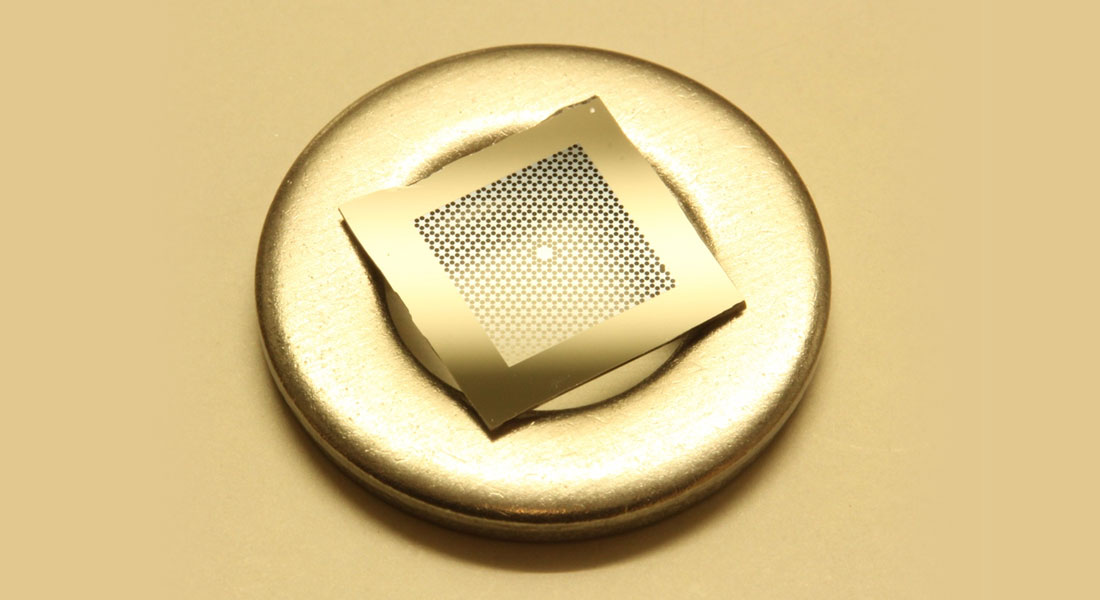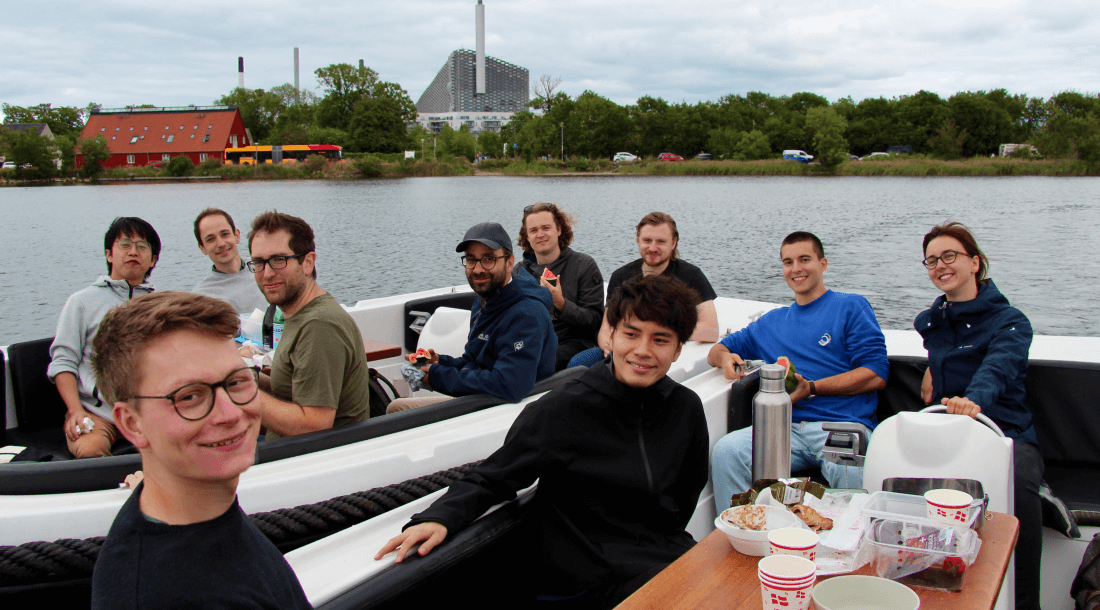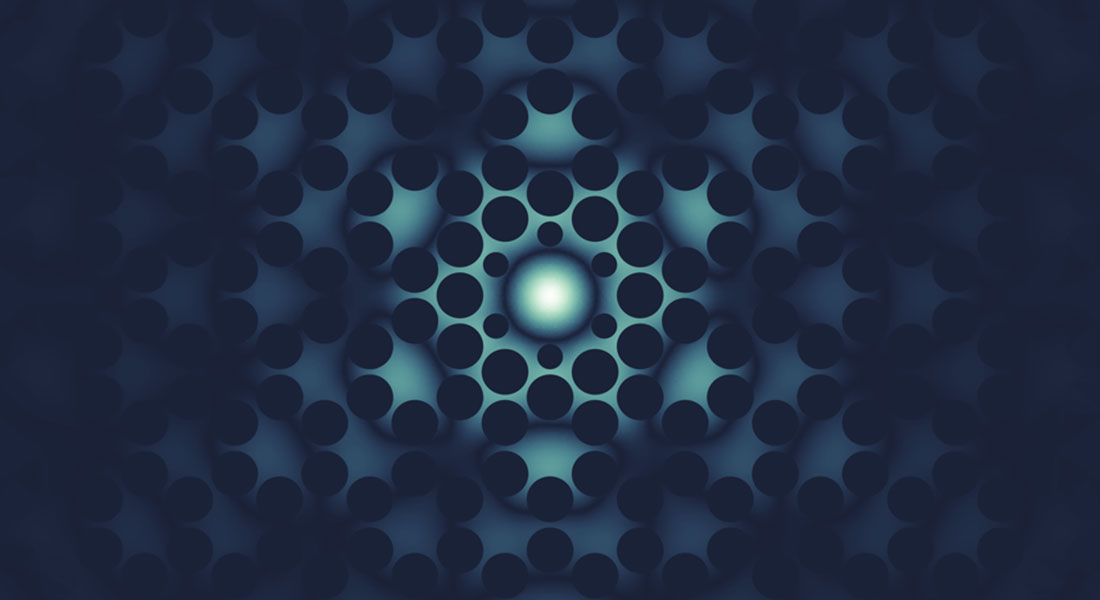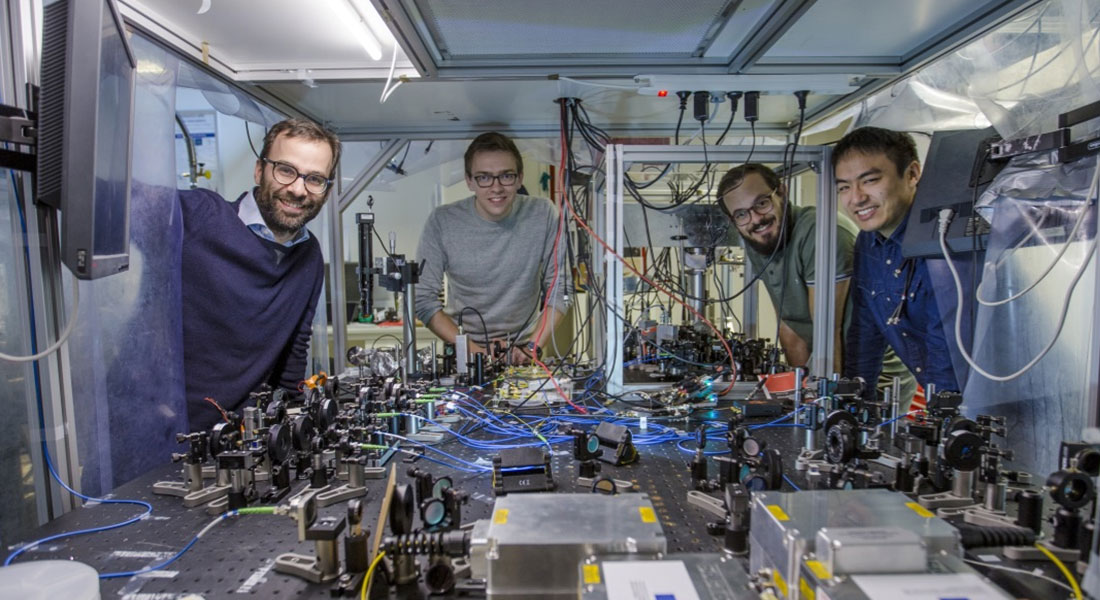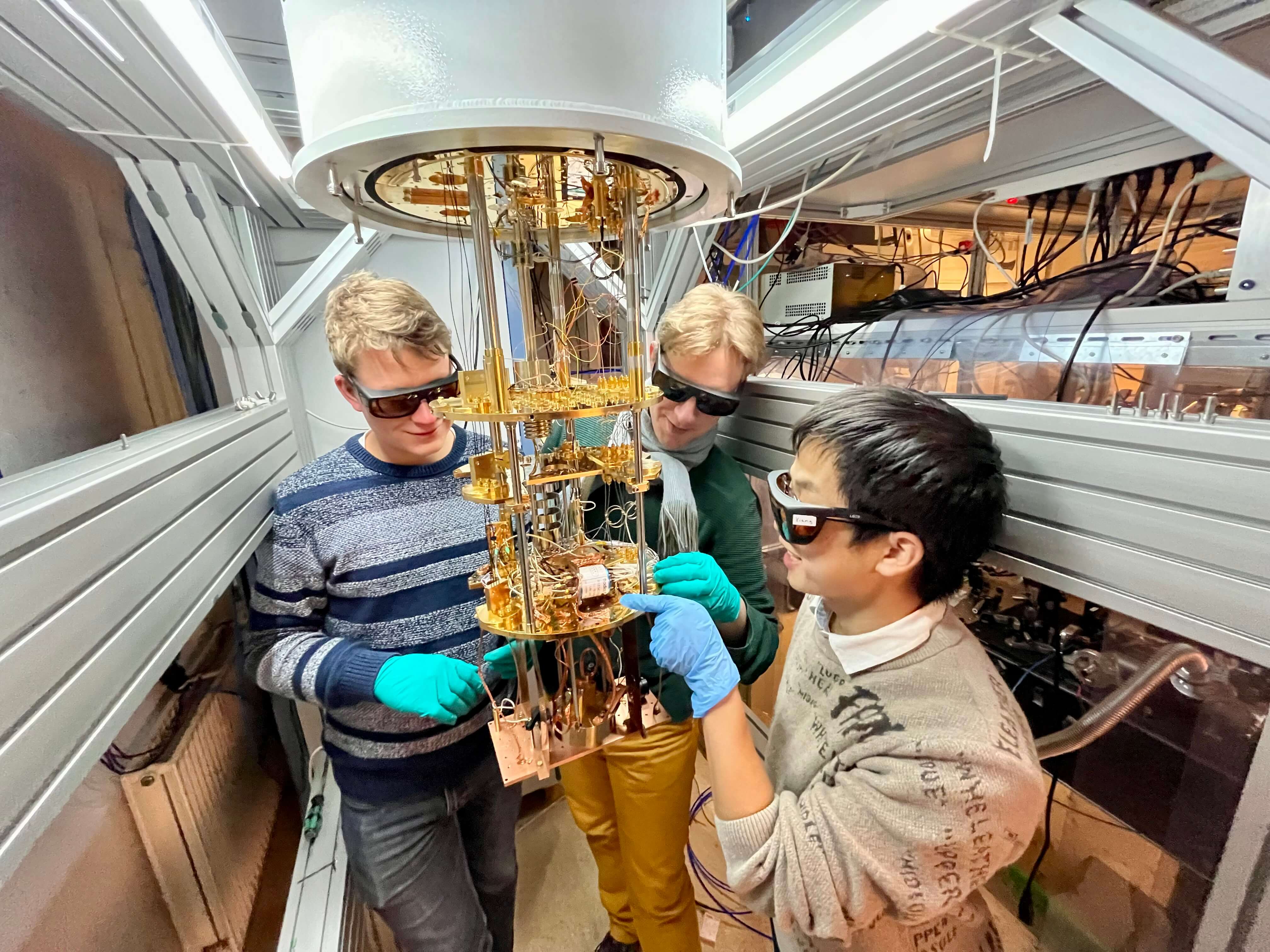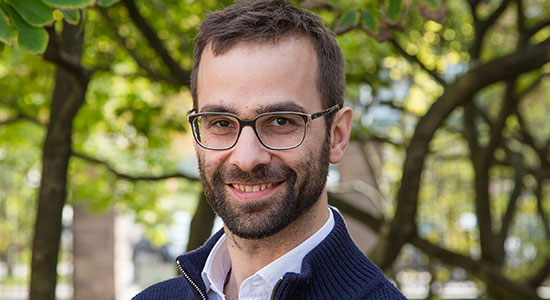Quantum Optomechanics
We translate our findings to application in quantum technologies, such as novel quantum sensors for electromagnetic fields and forces, and mechanical interfaces that can store and convert quantum information in hybrid quantum networks.
The Schliesser group was established in 2015 at the historic Niels Bohr Institute in central Copenhagen.
The group is now around a dozen members strong, and usually comprises Bachelor, Master and PhD students, as well as postdocs, from all over the world.
We entertain active connections to the international Optomechanics community, with recent collaborations with i.a. ETH Zurich, TU Delft, Paris Saclay, Cambridge University and Caltech.
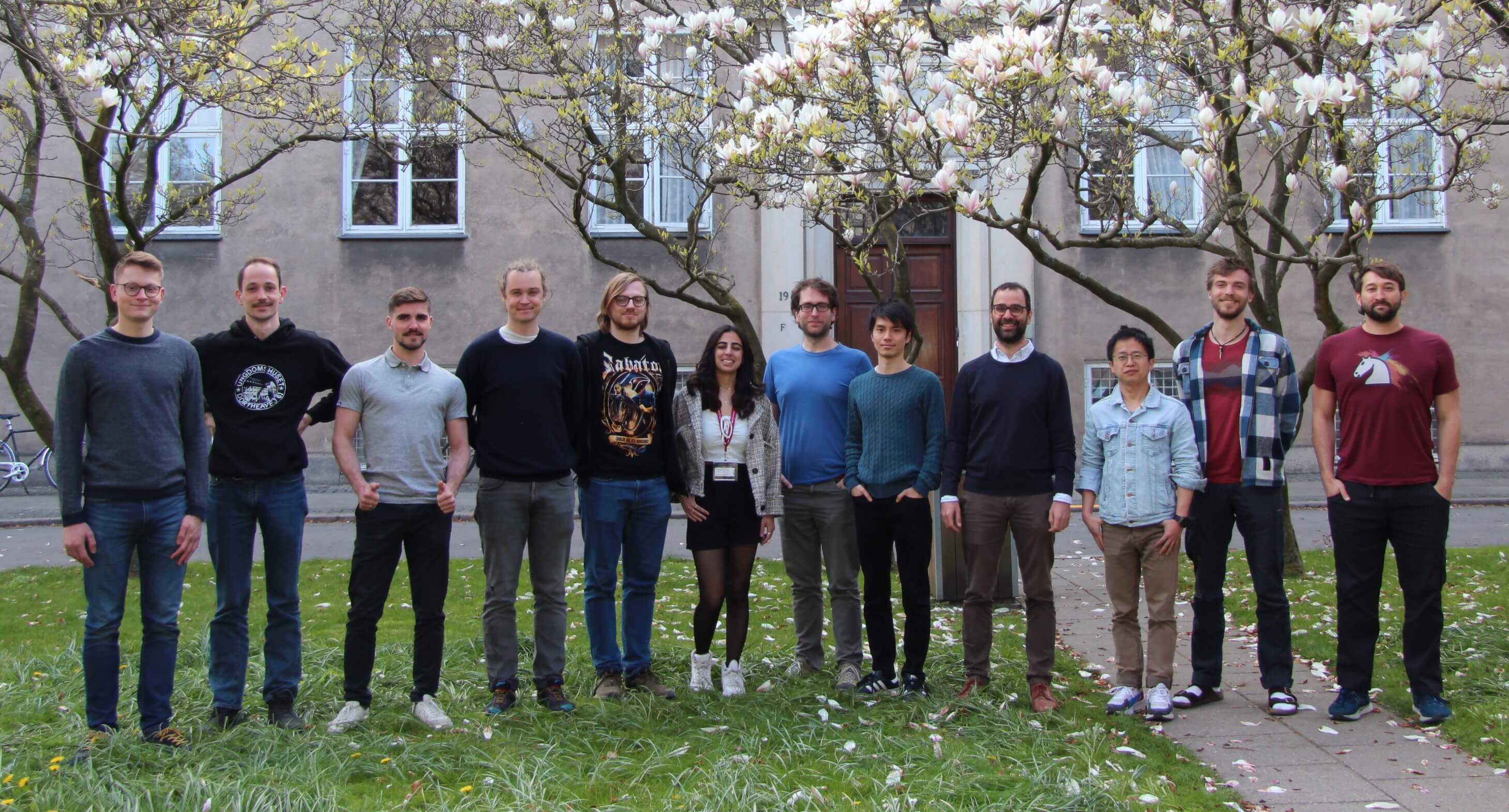
Ultracoherent mechanical devices

A phononic membrane resonator is at the heart of each of our experiments, functioning as an ultracoherent quantum system with built-in isolation from the environmental. Normal crystals are a collection of atoms with a repeating pattern, imbuing the material with special characteristics. Similarly, a phononic crystal is a fabricated object with a repeating pattern that gives it a particularly useful property – a bandgap that forbids the propagation of motion at certain frequencies. This allows us to ‘trap’ a mechanical resonance within the phononic crystal, creating a well-packaged quantum system.
Quantum Transduction
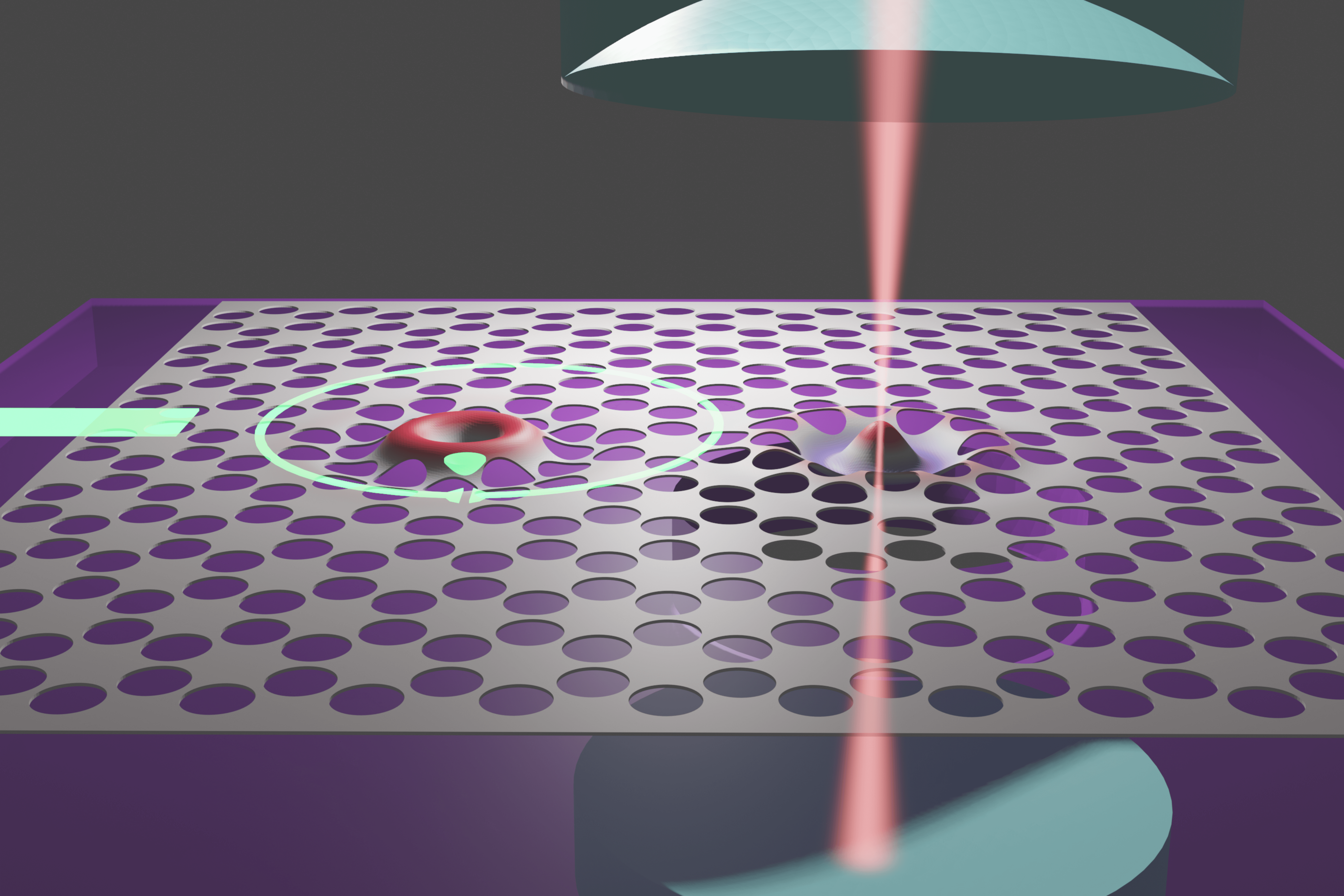
While microwave solid state qubits have demonstrated very efficient quantum protocols over the years, their fragile quantum states have yet been trapped at the bottom of cryostats. On the other hand, optical fibers can transport a quantum state over kilometers without loosing its salient features.
At SLAB, we are developing a platform to transduce quantum information from microwave to optics by coupling an ultracoherent mechanical resonator to both an optical and a microwave cavity. This technology could enable the development of a large scale hybrid network, coined “quantum internet”, where each node would be a different cryostat.
Cavity Optomechanics: a versatile vehicle for quantum mechanics
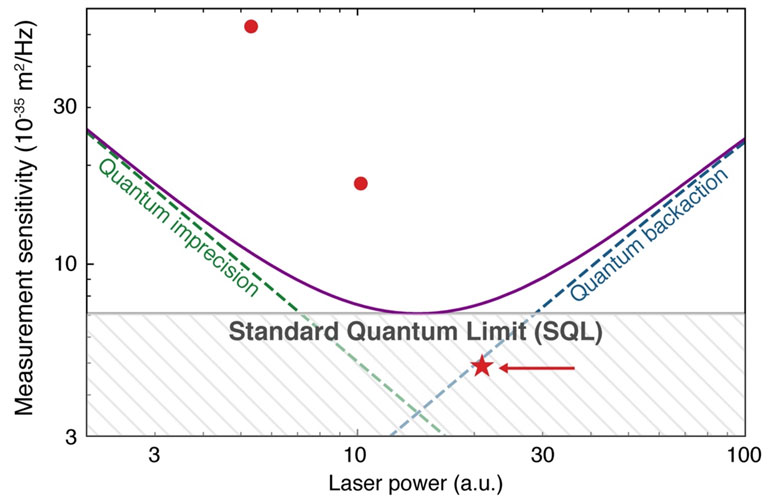
When photons reflect off a movable object, momentum is transferred. This idea of light exerting pressure on objects dates back to Kepler’s observation that comet tails are pointed away from the Sun. First considerations of this radiation pressure in the context of optomechanics are attributed to Braginsky, in the analysis of the light-induced modification of the frequency and damping rate of a movable mirror. We employ high-quality optical and mechanical resonators (see ultracoherent membrane resonators) to study optomechanical effects at the quantum level. This includes correlations, all the way down to the quantum fluctuations in the light and the motion. We can thereby also generate entanglement—the key resource for many quantum technologies—in an optomechanical system.
Hybrid spin-mechanics

Hybrid quantum systems, such as the textbook example of optically active 2-level systems coupled to cavity photons, are relevant for quantum technologies and foundations of quantum mechanics. Coupling a spin, which is an inherently quantum object, to a mesoscopic mechanical resonator could be used to enter a regime previously unattained in quantum optomechanics, which could ultimately lead to the generation of non-classical states of motion in a millimiter-sized membrane.
Mechanical interfaces and memories in hybrid quantum systems
Mechanical devices are of great interest as interfaces and memories in hybrid quantum systems. They are readily functionalized to couple to electromagnetic fields from the radio-frequency to the optical domain, as well as electron and nuclear spins.
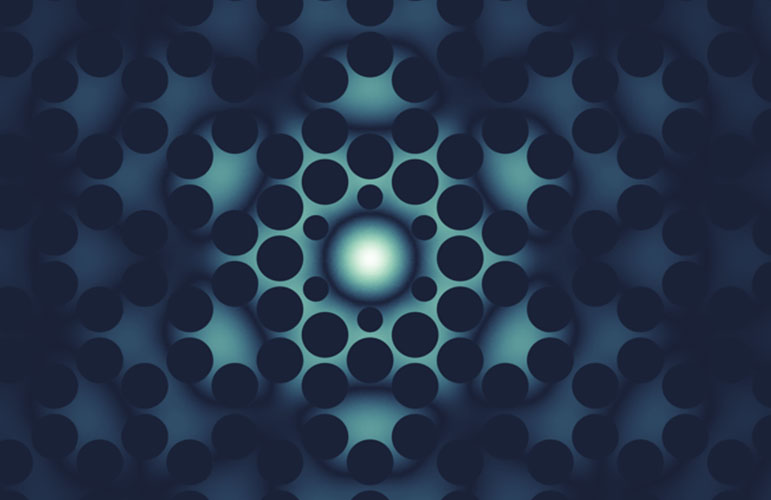
Therefore they can act as coherent transducers between different platforms for quantum information processing—and from those to optical photons, to date the only viable long-distance carrier for quantum information. We develop such interfaces based on highly coherent mechanical systems. The long lifetime of their quantum states additionally allows storage of quantum information in mechanical degrees of freedom, an avenue we explore with non-classical states of light such as single photons.
This research combines aspects of experimental and theoretical quantum optics, opto- and electromechanics and quantum information.
Ultracoherent topological phononic systems
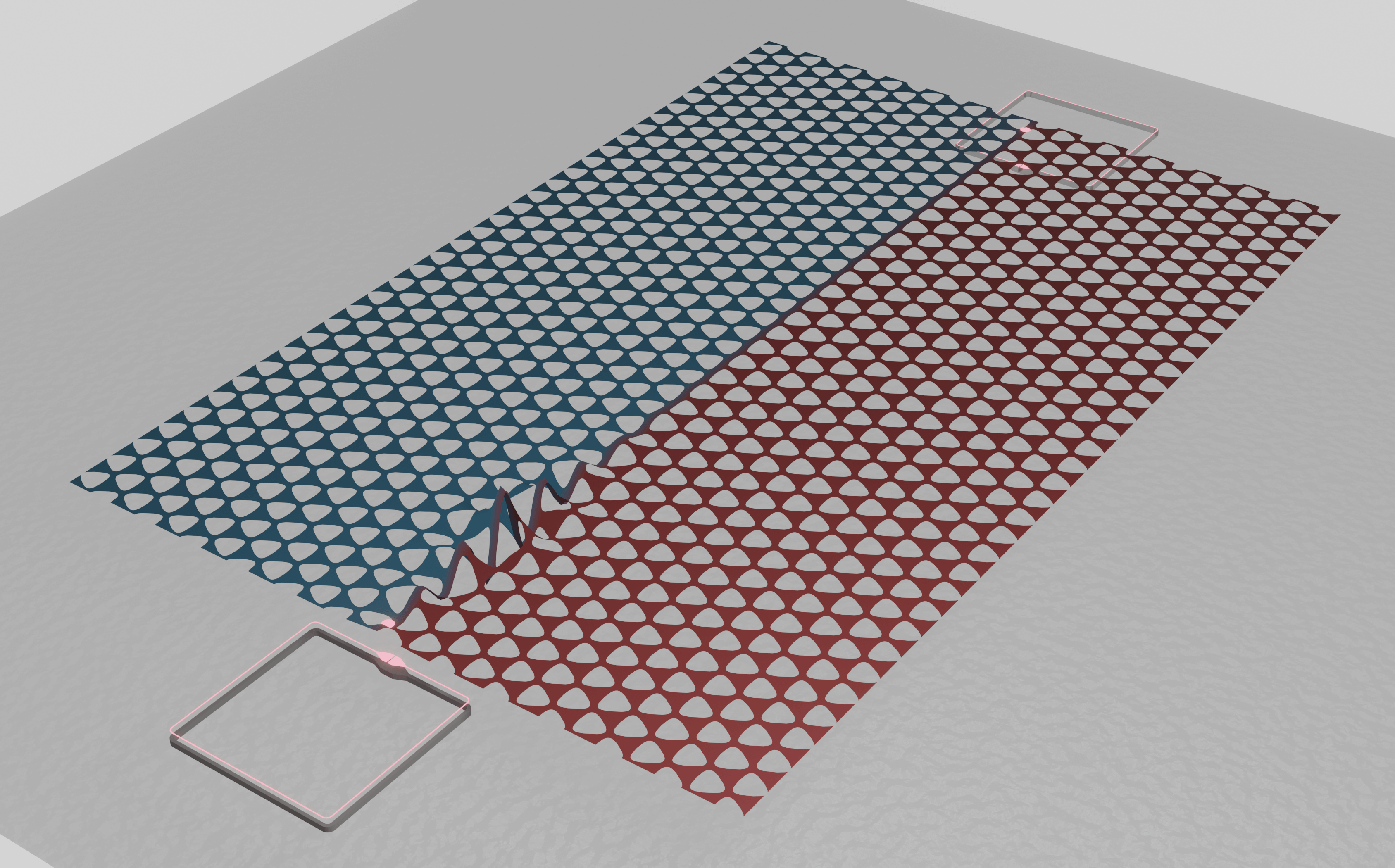 Similar to electrical wires and optical waveguides, phononic waveguides allow information transfer via phononic waves and then form a phononic circuit. Phononic waveguides have been established as good interconnect channels among different physical systems due to their direct and strong coupling to electrical, optical, and even spin systems, and also been proved practical for quantum signal transport. In our lab, we are applying dissipation dilution and soft clamping techniques to topological phononic system to largely reduce the phononic propagation loss. By coupling the phononic waveguides to superconducting system, we can thereby realize quantum information transfer.
Similar to electrical wires and optical waveguides, phononic waveguides allow information transfer via phononic waves and then form a phononic circuit. Phononic waveguides have been established as good interconnect channels among different physical systems due to their direct and strong coupling to electrical, optical, and even spin systems, and also been proved practical for quantum signal transport. In our lab, we are applying dissipation dilution and soft clamping techniques to topological phononic system to largely reduce the phononic propagation loss. By coupling the phononic waveguides to superconducting system, we can thereby realize quantum information transfer.
Our research is made possible by funding from the following sources:
Publications and pre-prints from the Schliesser group:
2024
-
A. Mashaal, L. Stefan, A. Ranfagni, L. Catalini, I. Chernobrovkin, T. Capelle, E. Langman, A. Schliesser: Strong Thermomechanical Noise Squeezing Stabilized by Feedback. arXiv:2403.02328
2023
- C.A. Rosiek, M. Rossi, A. Schliesser, A. S. Sørensen: Quadrature squeezing enhances Wigner negativity in a mechanical Duffing oscillator. arxiv:2312.12986
- M. B. Kristensen, N. Kralj, E. C. Langman and A. Schliesser: A Long-lived and Efficient Optomechanical Memory for Light. Physical Review Letters, 132(10), 100802.
- E. Planz, X. Xi, T. Capelle, E. C. Langman and A. Schliesser: Membrane-in-the-middle optomechanics with a soft-clamped membrane at milliKelvin temperatures. Optics Express, 31(25), 41773-41782.
2022
- G. Enzian, Z. Wang, A. Simonsen, J. Mathiassen, T. Vibel, Y. Tsaturyan, A. Tagantsev, A. Schliesser, E. S. Polzik: Phononically shielded photonic-crystal mirror membranes for cavity quantum optomechanics. Optics Express, 31(8)
- S. Saarinen, N. Kralj, E. Langman, Y. Tsaturyan & A. Schliesser: Laser cooling a membrane-in-the-middle system close to the quantum ground state from room temperature. Optica 10(3)
Highlighted in Phys.org ,YouTube and Raport Naukowa (polish TV media, article starts at 13:26). - Y. Seis, T. Capelle, E. Langman, S. Saarinen, E. Planz & A. Schliesser: Ground State Cooling of an Ultracoherent Electromechanical System. Nat. Comm. 13, 1507 (2022)
- D. Hälg, T. Gisler, E. Langman, S. Misra, O. Zilberberg, A. Schliesser, C. L. Degen & A. Eichler: Strong parametric coupling between two ultra-coherent membrane modes. Phys. Rev. Lett. 128, 094301 (2022)
- C. A. Rosiek: Enhancing the Formation of Wigner Negativity in a Kerr Oscillator via Quadrature Squeezing. arXiv:2202.02285
2021
- A. Schliesser & S. Gröblacher: Quanten-mechanisch im Wortsinne. Phys. Unserer Zeit 52.6 (2021): 282-289, doi.org/10.1002/piuz.202101608
- L. Catalini, M. Rossi, E. C. Langman & A. Schliesser: Modeling and Observation of Nonlinear Damping in Dissipation-Diluted Nanomechanical Resonators. Phys. Rev. Lett. 126, 174101 (2021)
- D. Hälg, T. Gisler, Y. Tsaturyan, L. Catalini, U. Grob, M.-D. Krass, M. Héritier, H. Mattiat, A.-K. Thamm, R. Schirhagl, E. C. Langman, A. Schliesser, C. L. Degen & A. Eichler: Membrane-based scanning force microscopy. Phys. Rev. Appl. (2021)
Highlighted in ABS.org. - M. A. Page, M. Goryachev, H. Miao, Y. Chen, Y. Ma, D. Mason, M. Rossi, C. D. Blair, L. Ju, D. G. Blair, A. Schliesser, M. E. Tobar & C. Zhao: Gravitational wave detectors with broadband high frequency sensitivity. Nat. Comm. Phys. (2021), arXiv:2007.08766
- P. Seidler, E. Verhagen, A. Schliesser & A. Xuereb: Shining a HOT Light on Optomechanics. IEEE Spectrum (2021)
- M. D. Sarto, L. Maggi, M. A. Shaw, A. Simonsen, A. Schliesser, M. Moraja, L. Mauri, M. Campaniello, D. Rotta, A. S. Rodrigo & A. Bogoni: Assembly of opto-mechanical devices. 2021 23rd European Microelectronics and Packaging Conference & Exhibition (EMPC) (2021)
2020
- R. A. Thomas, M. Parniak, C. Østfeldt, C. B. Møller, C. Bærentsen, Y. Tsaturyan, A. Schliesser, J. Appel, E. Zeuthen & E. S. Polzik: Entanglement between distant macroscopic mechanical and spin systems. Nature Physics (2020)
- M. Rossi, L. Mancino, G. T. Landi, M. Paternostro, A. Schliesser, & A. Belenchia: Experimental assessment of entropy production in a continuously measured mechanical resonator. Phys. Rev. Lett. 125, 080601 (2020), arXiv:2005.03429v1
- E. Zeuthen, A. Schliesser, A.S. Sørensen & J. M. Taylor: Figures of merit for quantum transducers. Quantum Sci. Technol. 5 034009
- M. Brunelli, D. Malz, A. Schliesser & A. Nunnenkamp: Stroboscopic quantum optomechanics. Phys. Rev. Research 2, 023241 (2020), arXiv:2003.04361
- L. Catalini, Y. Tsaturyan & A. Schliesser: Soft-clamped phononic dimers for mechanical sensing and transduction. Phys. Rev. Applied 14, 014041 (2020), arXiv:2003.04072
- J. Chen, M. Rossi, D. Mason & A. Schliesser: Entanglement of propagating optical modes via a mechanical interface. Nature Communications 11, 943 (2020), arXiv:1911.05729
2019
- D. Mason, M. Rossi, J. Chen, Y. Tsaturyan, A. Schliesser: Interferometric Measurement Beyond the Quantum Limit. Optics in 2019, Special issue of OSA Optics and Photonics News
- A. Simonsen, J. D. Sanchez, S. A. Saarinen, J. H. Ardenkjaer-Larsen, A. Schliesser, E. S. Polzik: Magnetic resonance imaging with optical preamplification and detection. Scientific Reports volume 9, Article number: 18173 (2019), arXiv:1906.12260
- M. Rossi, D. Mason, J. Chen, A. Schliesser: Observing and Verifying the Quantum Trajectory of a Mechanical Resonator. Physical Review Letters 123, 163601 (2019), arXiv:1812.00928
- D. Mason, J. Chen, M. Rossi, Y. Tsaturyan, A. Schliesser: Continuous Force and Displacement Measurement Below the Standard Quantum Limit. Nature Physics 15, 745 (2019), arXiv:1809.10629, Press release
- A. Schliesser: Quantum Physics: Counting grains of sound. Nature 571, 480 (2019)
- A. Simonsen, J. D. Sanchez, S. A. Saarinen, J. H. Ardenkjaer-Larsen, A. Schliesser, E. S. Polzik: Sensitive optomechanical transduction of electric and magnetic signals to the optical domain. Optics Express 27, 18561 (2019)
2018
- M. Rossi, D. Mason, J. Chen, Y. Tsaturyan, A. Schliesser: Measurement-based quantum control of mechanical motion. Nature 563, 53 (2018), https://arxiv.org/abs/1805.05087, News and Views, Press Release, Science Breaker Story
- A. Barg, L. Midolo, G. Kirsanske, P. Tighineanu, T. Pregnolato, A. Imamoglu, P. Lodahl,
S. Stobbe, A. Schliesser, E. S. Polzik: Carrier-mediated optomechanical forces in semiconductor nanomembranes with coupled quantum wells. Physical Review B 98, 155316 (2018) - E. Zeuthen, A. Schliesser, J. M. Taylor, A. S. Sørensen,
Electro-optomechanical equivalent circuits for quantum transduction. Physical Review Applied 10, 044036 (2018) - L. Midolo, A. Schliesser, A. Fiore: Nano-Opto-Electro-Mechanical Systems. Nature Nanotechnology 13, 11 (2018)
2017
- Y. Tsaturyan, A. Barg, E. S. Polzik, A. Schliesser: Ultracoherent nanomechanical resonators via soft clamping and dissipation dilution. Nature Nanotechnology 12, 776 (2017)
- C. B. Møller, R. A. Thomas, G. Vasilakis, E. Zeuthen, Y. Tsaturyan, M. Balabas, K. Jensen,
A. Schliesser, K. Hammerer, E. S. Polzik: Quantum back-action-evading measurement of motion in a negative mass reference frame. Nature 547, 191 (2017) - H. P. Nielsen, Y. Tsaturyan, C. B. Moller, E. S. Polzik, A. Schliesser: Multimode optomechanical system in the quantum regime. Proceedings of the National Academy of Sciences of the USA (2017), https://arxiv.org/abs/1605.06541, Press Release
- T. Capelle, Y. Tsaturyan, A. Barg, A. Schliesser: Polarimetric analysis of stress anisotropy in nanomechanical silicon nitride resonators. Applied Physics Letters 110, 181106 (2017)
- A. Barg, Y. Tsaturyan, E. Belhage, W. H. P. Nielsen, C. B. Møller, A. Schliesser: Measuring and imaging nanomechanical motion with laser light. Applied Physics B 123, 8 (2017)
For full list, see google scholar.
We are always looking for motivated and dedicated students!
Bachelor Project opportunities
Please contact Prof. Albert Schliesser at albert.schliesser*nbi.dk if you are interested.
Master Project opportunities
Please contact Prof. Albert Schliesser at albert.schliesser*nbi.dk if you are interested.
PhD positions
Please contact Prof. Albert Schliesser at albert.schliesser*nbi.dk if you are interested.
PostDoc positions
Please contact Prof. Albert Schliesser at albert.schliesser*nbi.dk if you are interested.
- Yeghishe Tsaturyan — PhD 2019 — next step: Postdoc in Awschalom group, University of Chicago
- David Mason — postdoc 2018-2020 — next step: Postdoc in Rakich group, Yale University
- Massimiliano Rossi — PhD 2020 — next step: Postdoc in Novotny group, ETH Zurich
- Junxin Chen — PhD 2021 — next step: Postdoc in LIGO group, MIT
- Sampo Saarinen — PhD 2021 — next step: Quantum engineer at IQM
- Yannick Seis — PhD 2021 — next step: Postdoc in Laboratoire de Physique, ENS de Lyon
- Letizia Catalini — PhD 2022 — next step: Postdoc in Degen group, ETH Zurich
- Nenad Kralj — postdoc 2019-2022 — next step: Independent research group leader, Max Planck Institute for Gravitational Physics
- Eric Planz — PhD 2023 — next step: Quantum engineer at Quantum Machines
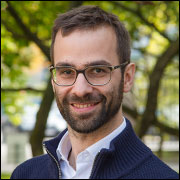 Albert Schliesser, Professor and groupleader
Albert Schliesser, Professor and groupleader
Blegdamsvej 17
2100 København Ø
Building F & T, Office: 12-1-TB3
Email: albert.schliesser@nbi.ku.dk
Phone: +45 35 32 54 01
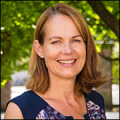 Charlotte Hviid, Administrative coordinator
Charlotte Hviid, Administrative coordinator
Niels Bohr Institute
Blegdamsvej 17
2100 København Ø.
Office: Bygning T, Ta2a
E-mail: hviid@nbi.ku.dk
Phone: +45 353-25254
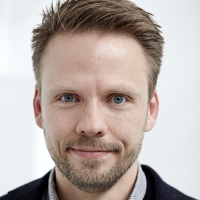 Frederik Uldall, Centre coordinator
Frederik Uldall, Centre coordinator
Office: Bygning T, Ta2a
E-mail: frederik.uldall@nbi.ku.dk
Office phone: +45 35 32 24 14
Staff
| Name | Title | Image |
|---|---|---|
| Search in Name | Search in Title | |
| Capelle, Thibault Adrien | Postdoc |
|
| Chernobrovkin, Ilia | PhD Fellow |
|
| Hahne, Felix Caspar | Research Assistant |
|
| Knudsen, Frederik Holst | Laboratory Assistant |
|
| Konzett, Leopold | PhD Fellow |
|
| Kristensen, Mads Bjerregaard | Postdoc |
|
| Langman, Eric Christopher | Assistant Professor |
|
| Mashaal, Aida | PhD Fellow |
|
| Pfau, Teresa Klara | PhD Fellow |
|
| Pitts, Michael James | Postdoc |
|
| Ranfagni, Andrea | Postdoc |
|
| Schliesser, Albert | Professor |
|
| Tamaki, Sho | Research Assistant |
|
| Xi, Xiang | Assistant Professor |
|

